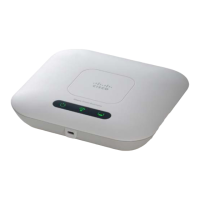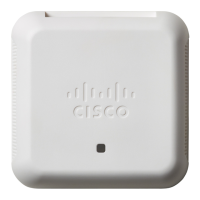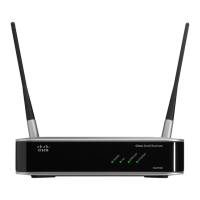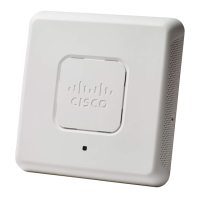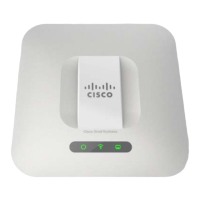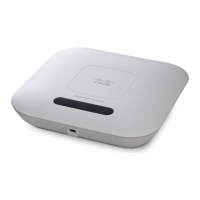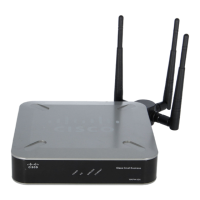Quality of Service
Policy Map
Cisco WAP131 and WAP351 Administration Guide 134
7
- Destination MAC Mask—Enter the destination MAC address mask
specifying which bits in the destination MAC address to compare against
an Ethernet frame.
• VLAN ID—Specified the VLAN ID to be matched for the packets. The VLAN
ID range is from 0 to 4095.
STEP 5 Click Save. The changes are saved to the Startup Configuration.
NOTE To delete a class map, choose it in the Class Map Name list and click Delete. The
class map cannot be deleted if it is already attached to a policy.
Policy Map
Packets are classified and processed based on the defined criteria. The
classification criteria is defined by a class on the Class Map page. The processing
is defined by a policy's attributes on the Policy Map page. Policy attributes may be
defined on a per-class instance basis and determine how traffic that matches the
class criteria is handled.
The WAP device supports up to 32 class maps in all created policy maps.
To add and configure a policy map:
STEP 1 Select Quality of Service > Policy Map.
STEP 2 In the Policy Map Name field, enter the name for the policy map.The name can
contain from 1 to 31 alphanumeric and special characters. Spaces are not
allowed.
STEP 3 Click Add Policy Map.
STEP 4 In the Policy Class Definition area, configure these parameters for the policy map:
• Policy Map Name—Choose the policy map to configure.
• Class Map Name—Choose the class map to apply this policy.
• Police Simple—Establishes the traffic policing style for the class. The
simple form of the policing style uses a single data rate and burst size,
resulting in two outcomes: conform and nonconform.
If you enable this feature, configure one of these fields:
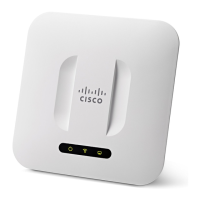
